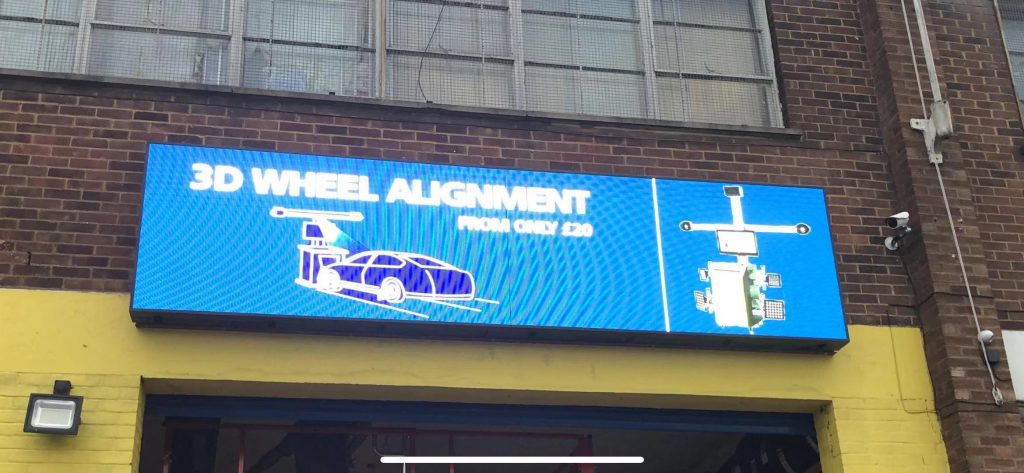Replacing LCD with Direct View Small Pitch LED digital signage for window display.We help retailers turn storefronts into high-impact digital experiences.Traditional LCD signage struggles under sunlight, wears out quickly, and limits visibility.
LED displays are essential for modern events because of their high brightness, clarity, durability, and flexibility.
Selecting the right screen for your venue ensures the effect of the event. Different types of sites have different requirements for display screens. This guide will explore how to choose a suitable LED display for indoor and outdoor event sites.
* Usage: storefront signs, road signs, Commercial ads
* Requirements: High brightness (4500–6000cd/sqm) and waterproof IP65.
* Recommended Models: Durable P5, P6, P8, P10 displays in outdoor environment.
* Requirements: Large-scale, high-definition screens with wide viewing angles,
Easy installation and maintenance,
* Recommend: High brightness P3.91, P5, P6 or other model according to display size, viewing distance.
* Usage: Video conferences, command centers, studios.
* Requirements: Ultra-high resolution for precise detail.
* Recommended Models: Small-pitch screens like P0.9, P1.2 and more options that ensure high clarity
* Usage: Presentations, product launches, trade shows.
* Requirements: Clear visuals for audiences within 3 meters.
* Recommended Models: Budget- friendly P1.8, P2, P2.5, or P3 displays maintain good visual effects
* Usage: Performances, celebrations, wedding
* Requirements: Lightweight, Portable, modular designs for quick install and disassemble.
* Recommended Models: P4, P5 or other models
When choosing an LED display, also need to consider the following key factors
* Close viewing: application examples: Corporate Spaces, conference rooms, trade shows etc within 3m.
For near distance, need to choose a high-resolution, high-definition LED display like P0.9–P3 to ensure sharp details.
* Long-distance viewing: application examples: outdoor billboards, large-scale event etc over 5m.
A larger pixel size like P5–P10 can maintain the clarity of the picture at a long distance.
* Indoor LED display: 700–2000cd brightness; High resolution and color accuracy for improved image quality
* Outdoor Screens: 4500–6000cd that ensure be displayed clearly under direct sunlight. High contrast and wide viewing angles make sure color accuracy and enhance the audience’s viewing experience.
* Budget: Choose the right LED pixel pitch and size according to the budget to ensure the best display effect.
* Long-term costs: In addition to the purchase price, pick a display that uses less energy and needs little maintenance. This choice can lower long-term operating costs.
* For temporary events (e.g. exhibitions, celebrations), choose lightweight, quick-assembly rental LED display (P5–P10) or flexible LED panels for curved installations.
* Modular design improves the flexibility that can customize to different sizes and shapes.
The display has a wide viewing angle so that no matter where the audience is, they can get a good visual effect.
* For indoor spaces, choose a display with a horizontal viewing angle of at least 120° and the vertical angle is at least 90°.
*Some high-end outdoor displays can have a horizontal viewing angle of over 160°. This ensures the audience sees a clear image from different angles.
* Indoor display screen: The protection level of indoor display screens can reach IP20 or higher to meet basic needs.
* Outdoor display screen: Outdoor display screens need to have a higher level of protection at least IP65.
It can prevent the entry of water and resist the invasion of venomous weather such as wind, rain and lightning.
* Synchronous control system:
Ideal for cases where real-time playback of dynamic content (for example; videos, images, etc.) is needed. With the synchronous control system, the display screen can be connected to computers, video processor, in real time, and the content is updated and displayed synchronously.
* Asynchronous LED Control System:
you can first edit the content on the computer and then send it to the receiving board.
The asynchronous system mainly controls the screen wireless via WIFI / 4G, but you can also control the screen via computer. One of the most obvious differences is that you cannot play the real-time content through asynchronous control system.
Conclusion
The selection of the appropriate LED display screen is the key to enhancing the effect of the event site. To choose the right LED display screen, analyze viewing distance, brightness, color, cost, flexibility, and portability. Consider all relevant information based on the actual situation.
If you want to know more about LED display screens, please get in touch with us.
